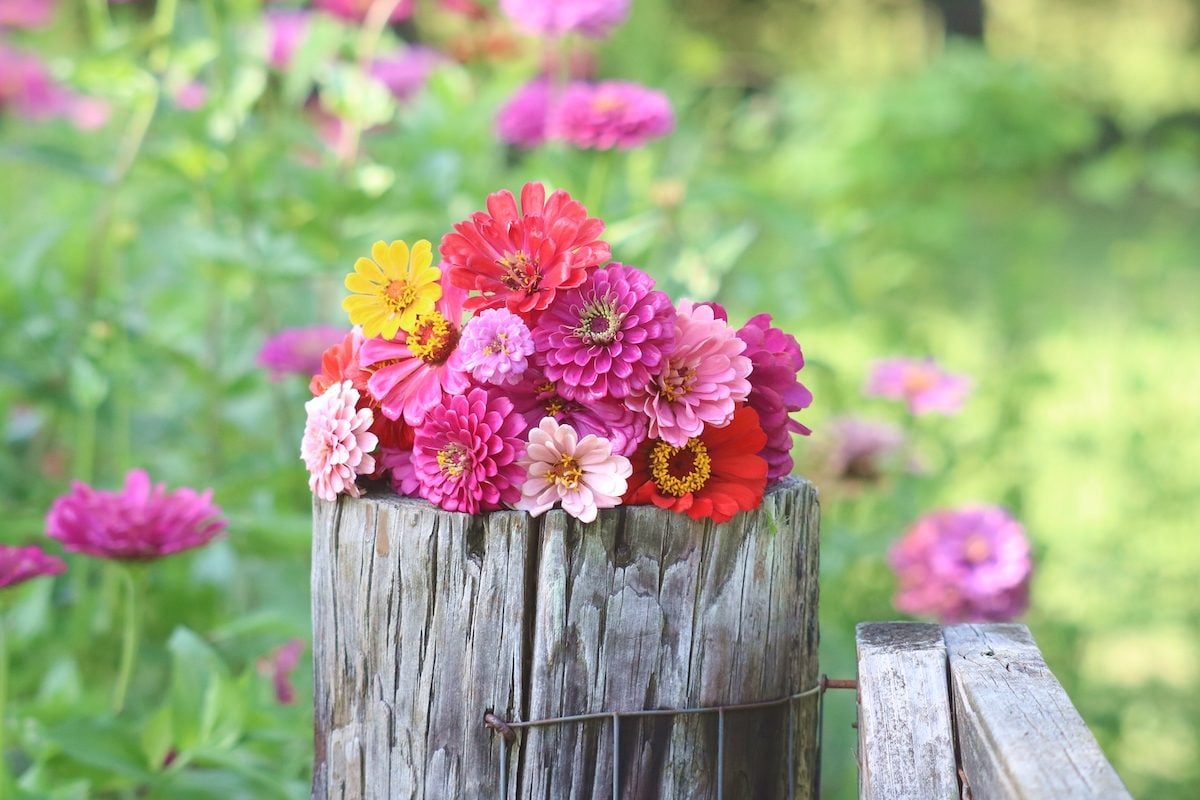In order to attract hummingbirds, it is important to find flowers that can thrive and survive in your specific weather conditions. There are countless varieties of flowers that can catch the attention of hummingbirds, but they must be able to withstand the heat or cold that your region experiences. If the weather is too extreme, the plants may perish or fail to produce the necessary nectar-rich flowers for the hummingbirds to feed on.
To determine which plants are suitable for your area, you can refer to the USDA plant hardiness zone map, which divides the United States into 13 zones based on average minimum temperatures. Each state may have different zones within it. Different plants thrive in different zones and can tolerate minimum temperatures, but they may not survive if it gets too cold.
For instance, Wyoming experiences very cold winters and falls within plant hardiness zones 3 to 6. Higher elevations in the state tend to be colder than lower areas.
On the other hand, plants can also suffer from excessive heat. To account for this, the American Horticultural Society has created the plant heat-zone map. This map indicates the average number of days in an area where temperatures exceed 86 degrees Fahrenheit.
In the case of Wyoming, it does not have many hot days and falls within plant heat zones 1 to 7. Therefore, it is the cold winters rather than the heat that would impact hummingbird plants in this region.
To ensure that the listed plants for hummingbirds in Wyoming are suitable, they have been cross-checked against the cold and heat zones specific to the state. These plants not only offer stunning nectar-rich flowers that hummingbirds adore, but they will also flourish in Wyoming’s weather conditions.
It is important to note that plants listed for higher-numbered hardiness zones may not survive the harsher winters experienced in lower-numbered hardiness zones.
To attract hummingbirds in Wyoming, it is recommended to plant as many of these flowers as possible. By doing so, you create an inviting habitat for these delightful creatures.
Let’s now explore some of the plant options that can attract hummingbirds in Wyoming based on their hardiness zones:
1. Nasturtiums
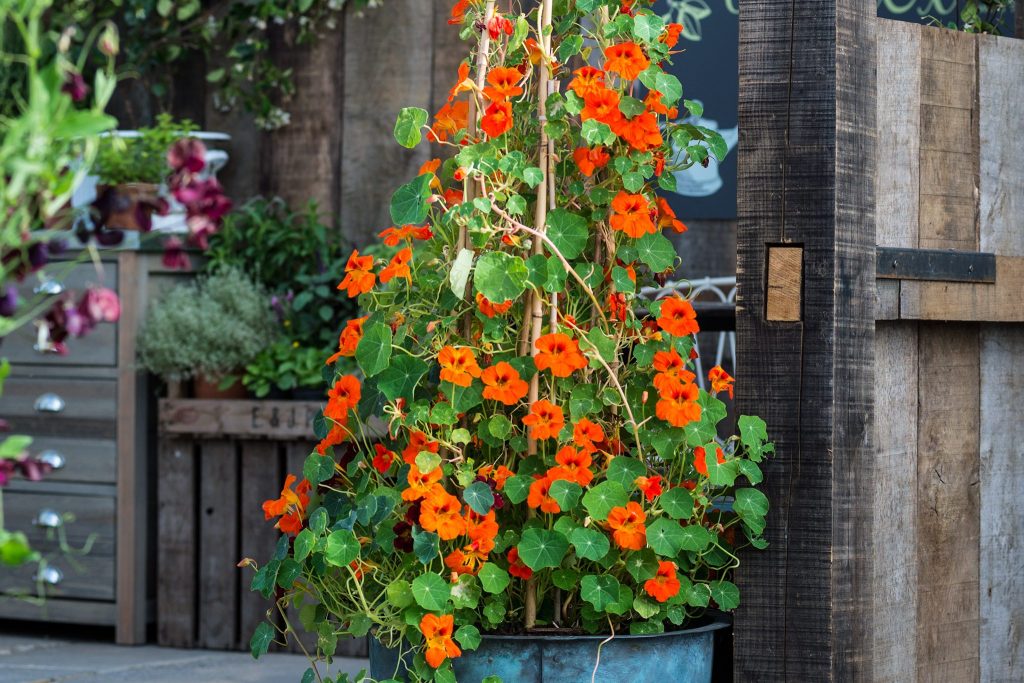
Nasturtiums are trailing flowers with edible blooms, making them perfect for hanging baskets that hummingbirds can enjoy. Their deep flowers contain rich nectar that hummingbirds find irresistible. These annual plants come in trailing or bush varieties and should be planted outdoors after the last frost. Ensure they receive adequate watering during the growing season and remove faded flowers.
2. Zinnia

Zinnias are vibrant flowering shrubs native to North American scrublands and dry grasslands. They belong to the sunflower tribe and the daisy family. Zinnias come in three main types based on their petal structure: single-flowered, double-flowered, and semi-double-flowered. The Zinnia elegans is particularly popular for attracting pollinators like butterflies and hummingbirds. These easy-to-grow plants prefer full sun and well-drained, neutral to slightly alkaline soil.
3. Agastache
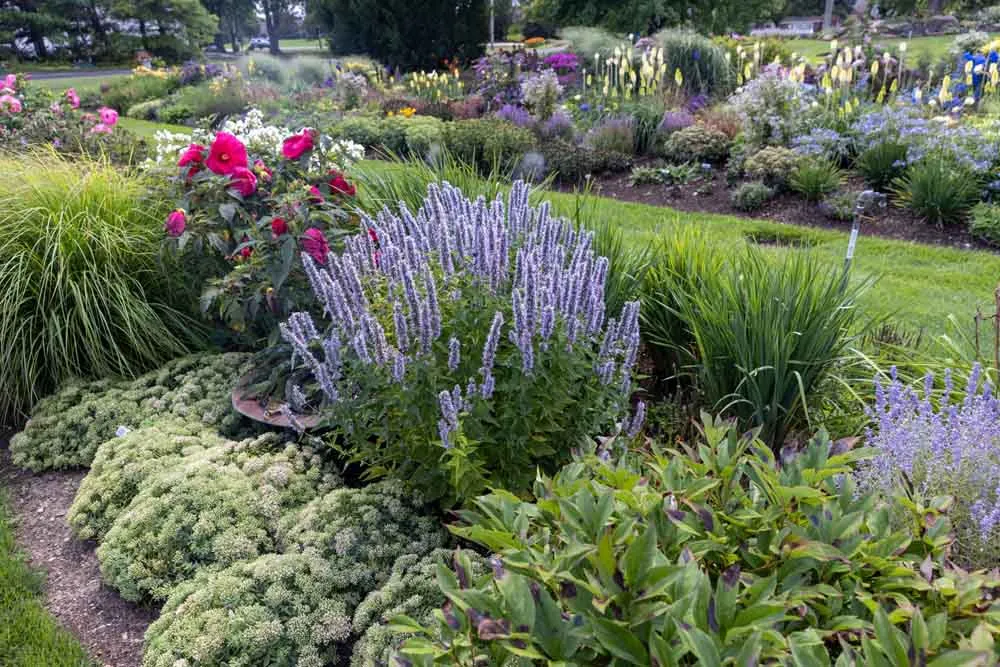
Agastache, also known as “hummingbird mints” or “Giant hyssops,” are aromatic perennials native to North America. Their unique flower clusters, composed of numerous tiny flowers, are about 3 to 4 inches long and display striking purple and red hues. Agastache flowers are irresistible to hummingbirds, especially when they are in full bloom during the summer. Start them as indoor plants in May and transplant them into flower beds during the summer, ensuring they receive full sun and regular watering during establishment.
4. Morning Glory
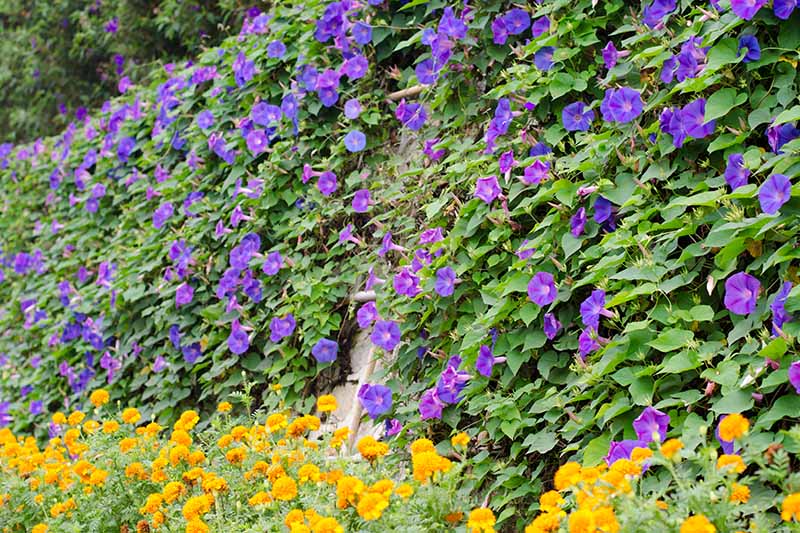
Morning Glory is a name given to over 1,000 species of flowering plants in the Convolvulaceae family. These plants feature bright, colorful blooms that open in the morning and close during the heat of the day. One popular species is Ipomoea purpurea, known for its bright purple, trumpet-shaped flowers that attract butterflies and hummingbirds. Morning Glories are annual vines that require full sun and well-draining soil. Beware of their fast growth, as they can become invasive if not properly managed.
5. Impatiens

Impatiens are vibrant annuals that thrive in shady areas and attract hummingbirds. They prefer moist and well-drained soil, making them suitable for hanging baskets or porch planters. Impatiens can be grown from seeds or purchased as young plants. They come in various colors such as red, pink, purple, yellow, and coral.
6. Columbine

Columbine, also known as Aquilegia, is an elegant perennial plant that thrives in partial shade. Its spiky, bell-shaped blooms come in a range of vibrant colors and serve as a magnet for hummingbirds. Columbine is drought-tolerant and deer-resistant, making it a low-maintenance choice. Start the seeds directly in the ground in spring or sow them indoors before the last frost.
7. Coneflower
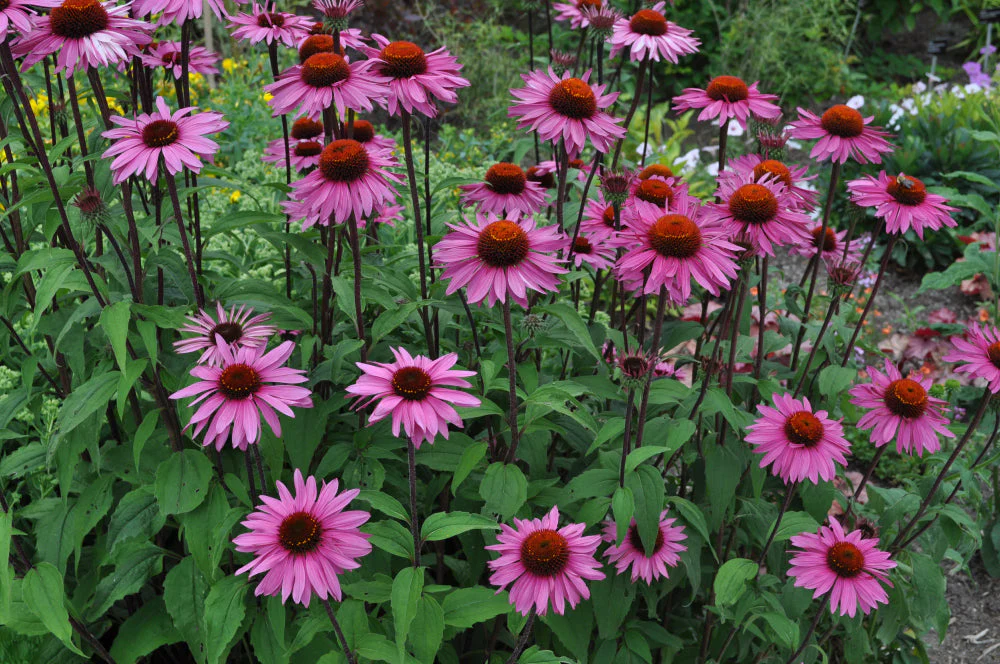
Coneflower, scientifically known as Echinacea, is a member of the daisy family. Its vibrant, cone-shaped flowers in colors such as white, pink, and purple are a favorite of hummingbirds. These large flowers attract pollinators and add beauty to any garden. Coneflowers prefer full sun and well-drained soil. After flowering, leave the seed heads to provide food for birds during autumn and winter.
8. Penstemon
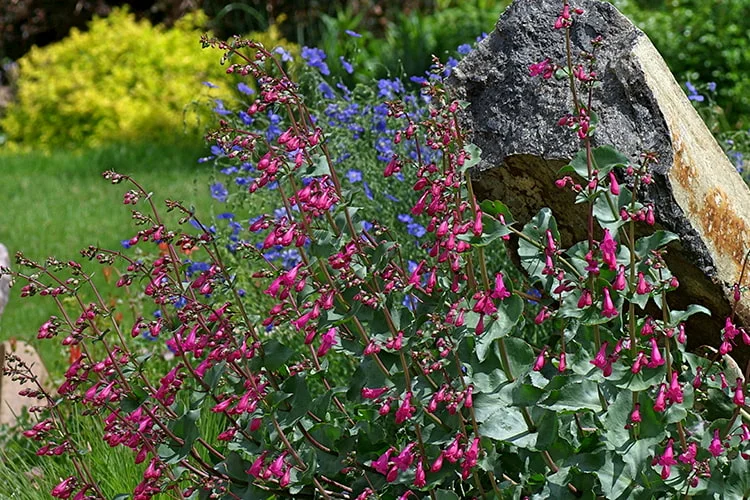
Penstemon is a genus of flowering plants that includes over 250 different species. These ornamental perennials, also known as beardtongue, are loved by hummingbirds and bees. With varieties in different sizes and colors, penstemons are a versatile choice for your garden. They prefer full sun and lean, well-drained soil. Regular pruning after flowering helps promote new growth.
9. Summersweet
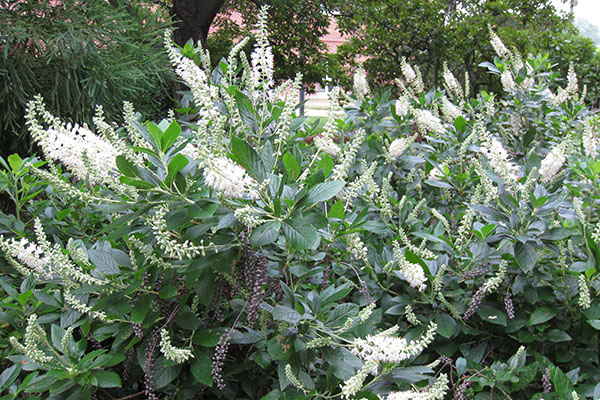
Summersweet, scientifically known as Clethra alnifolia, is a flowering shrub that attracts hummingbirds. Its vertical spikes of spicy-scented white flowers stand out against dark green foliage. Summersweet thrives in moist to wet soil conditions, making it ideal for wetland areas or near ponds and streams. It tolerates shade and can add beauty to shady corners of your garden.
10. Yarrow
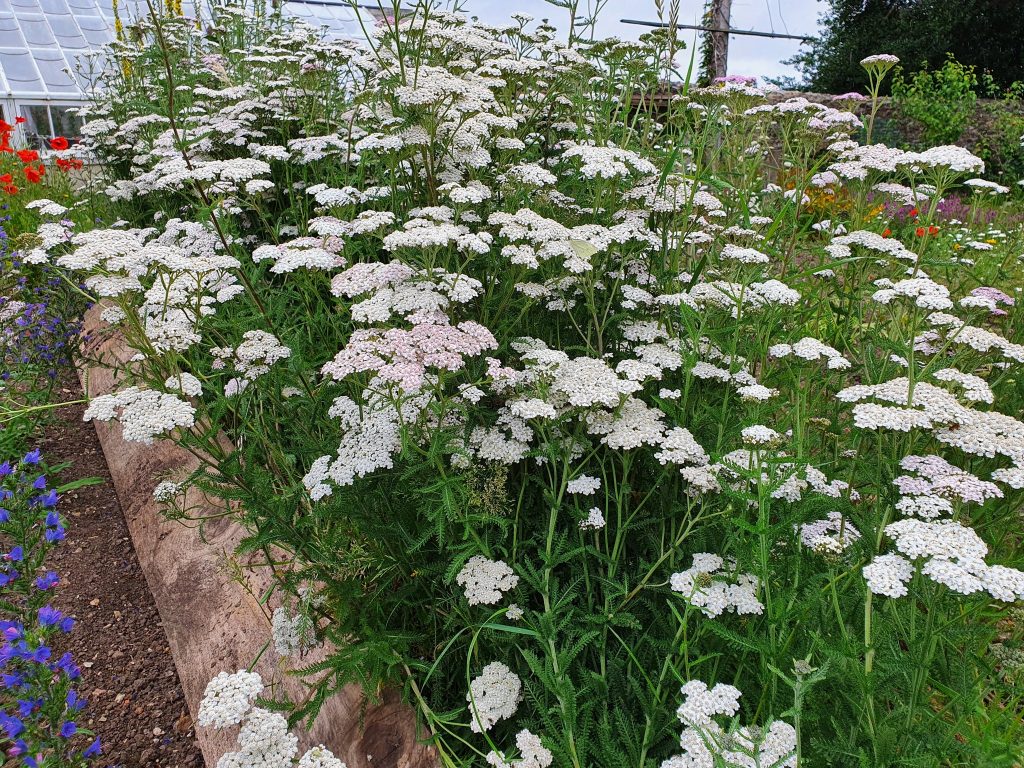
Yarrow, or Achillea millefolium, is a flowering plant with clusters of tiny flowers in white, yellow, pink, or red. These flowers are attractive to hummingbirds, bees, and butterflies. Yarrow is a hardy perennial that requires little maintenance. It thrives in full sun and can tolerate various soil conditions, including sandy, loamy, and clay soils.
11. Butterfly Weed
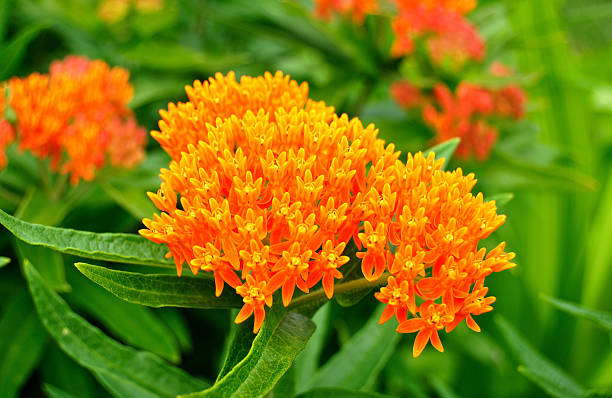
Butterfly weed, scientifically known as Asclepias tuberosa, is a bushy plant with long, bright red tubular flowers designed to attract hummingbirds with their long bills. These herbaceous perennials bloom in late summer and feature striking orange to yellow flowers. Butterfly weed prefers moist soil and should be planted in an area where fallen fruit is not an issue.
12. Hydrangea
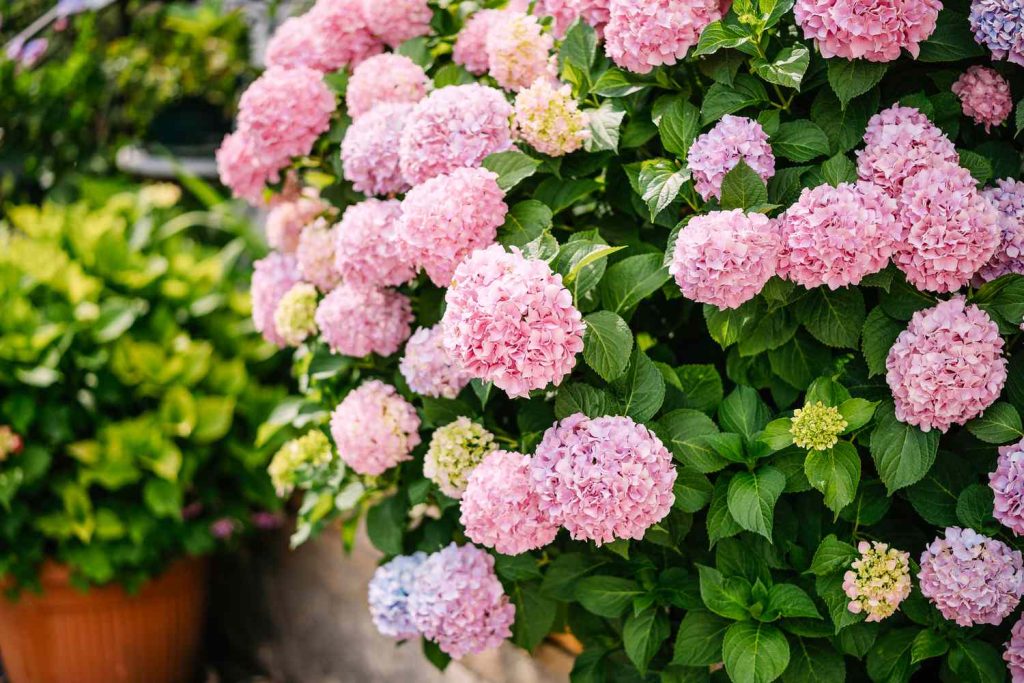
Hydrangeas are known for their huge flower heads and are a great addition to shady areas of your yard. While they don’t specifically attract hummingbirds, they can still add beauty to your garden and create a welcoming environment for other pollinators. Hydrangeas prefer moist soil and can be planted in full sun or partial shade.
13. Veronica
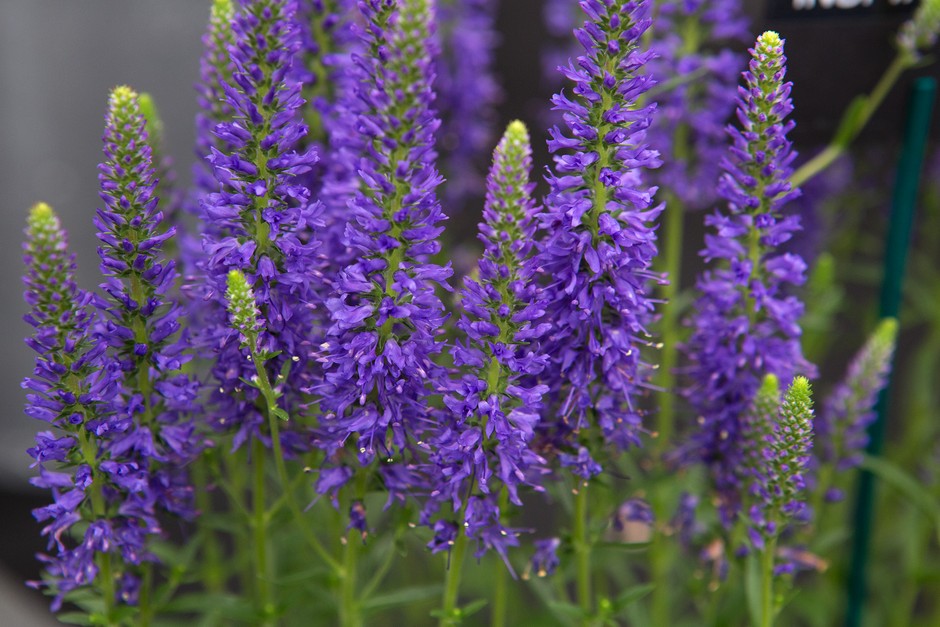
Veronica is a genus of flowering plants with approximately 500 species. These herbaceous annuals or perennials attract hummingbirds, bees, and butterflies with their clusters of flowers. Veronicas come in different varieties, including low-growing ground covers and taller plants with upright flower spikes. They thrive in full sun or partial shade, depending on the variety, and require well-drained soil.
14. Bleeding Heart

Bleeding heart, scientifically known as Dicentra spectabilis, is a perennial plant that features delicate, heart-shaped flowers in colors such as red, white, and pink. While not specifically known for attracting hummingbirds, these charming flowers can still add visual appeal to your garden. Bleeding heart prefers partial shade and moist, well-drained soil.
15. Cardinal Flower
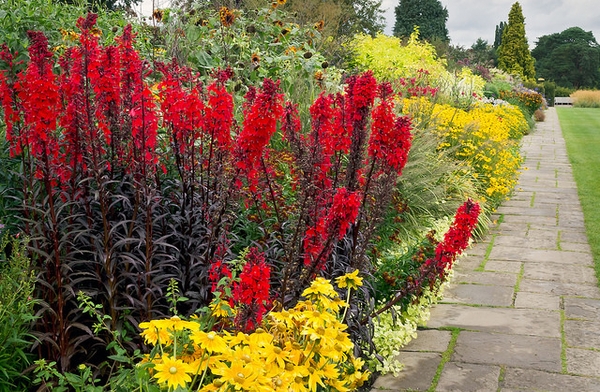
Cardinal flower, or Lobelia cardinalis, is a herbaceous perennial with long, bright red tubular flowers that are specially designed to attract hummingbirds. These vibrant flowers appear on terminal spikes and bloom in late summer. Cardinal flowers prefer rich, moist soil and can tolerate full sun to partial shade.
16. Phlox

Phlox is a genus of flowering plants that includes creeping phlox, woodland phlox, and garden phlox. These plants produce clusters of fragrant flowers in colors such as white, pink, red, purple, and blue. Phlox varieties can bloom in spring, summer, or fall, attracting hummingbirds with their abundant nectar. They thrive in moist soil and prefer full sun to partial shade.
17. Viburnum
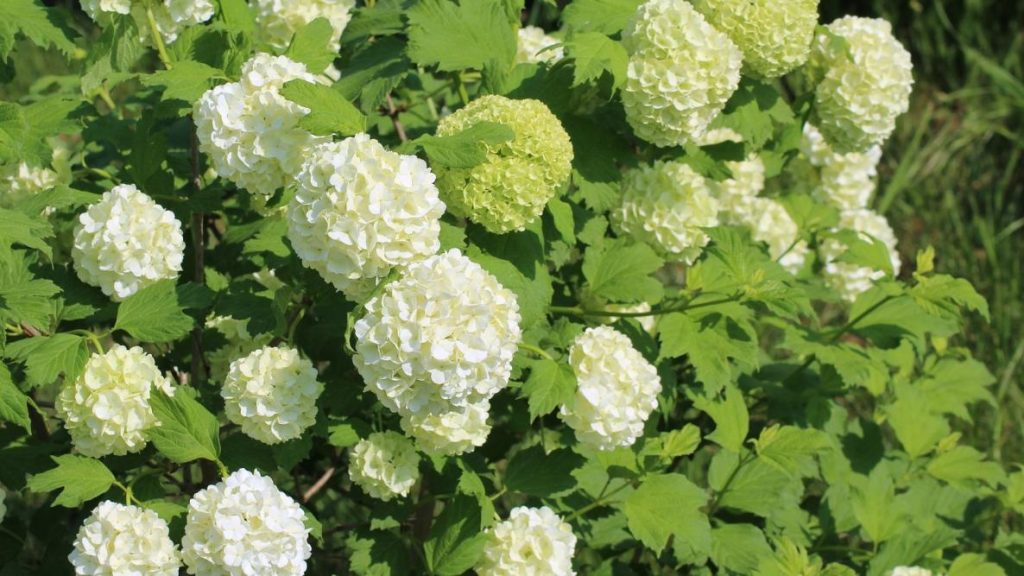
Viburnum is a diverse genus of flowering plants that includes over 150 species. These plants attract hummingbirds and other pollinators with their nectar-rich, shapely flowers. Viburnums offer a range of leaf colors and produce berries of various colors, adding visual interest to your garden. They prefer full sun to partial sun and well-drained soil.
18. English Hawthorn
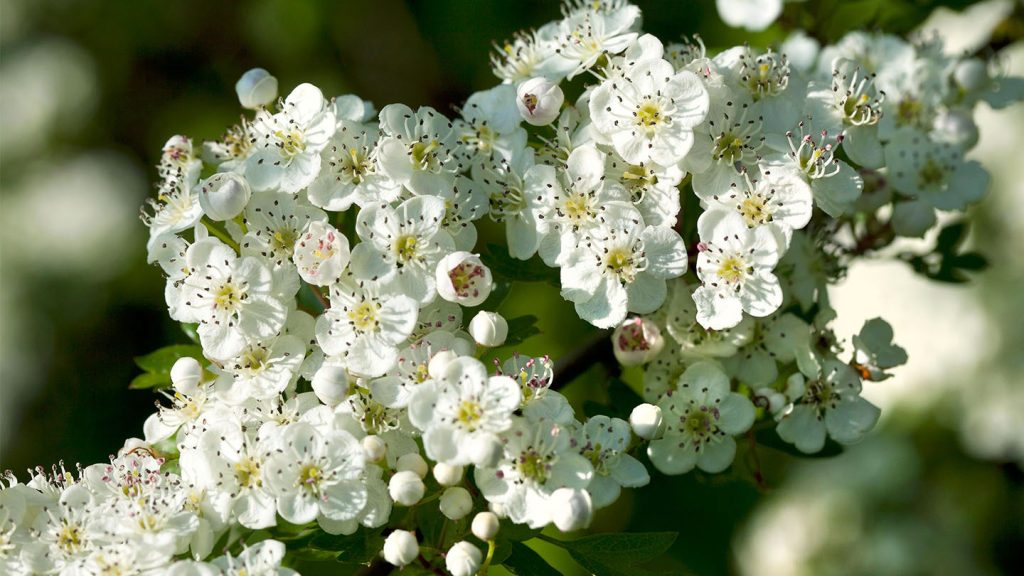
English Hawthorn, scientifically known as Craetaegus Laevigata, is a deciduous, thorny tree that blooms profusely during spring. Its flowers come in radiant colors of white, pink, lavender, and red, creating a stunning display. English Hawthorn trees are small to medium-sized and tolerate drought and poor soil conditions. They prefer full sun and moist, well-drained soil.
19. Salvia

Salvia, also known as sage, is a genus of flowering plants that includes both annual and perennial varieties. The tubular flowers of salvia come in vibrant colors such as red, purple, blue, and pink, attracting hummingbirds with their abundant nectar. Salvia plants prefer full sun and well-drained soil, and they are known to be drought-tolerant once established.
20. Trumpet Vine
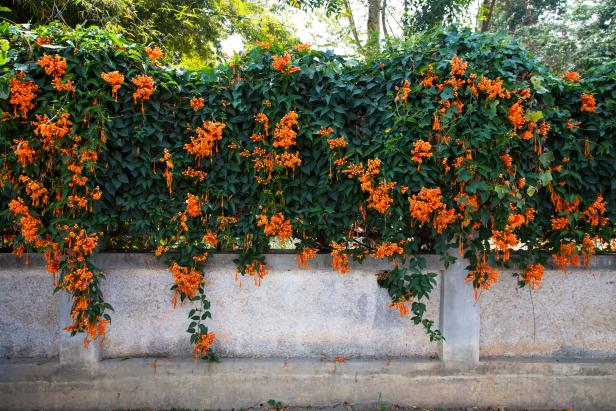
Trumpet vine, scientifically known as Campsis radicans, is a vigorous climbing vine that produces large, trumpet-shaped flowers in shades of orange or red. These showy flowers are highly attractive to hummingbirds. Trumpet vines are hardy and can tolerate various soil conditions, although they prefer well-drained soil. They thrive in full sun and can quickly cover fences, trellises, or arbors.
21. Beardtongue
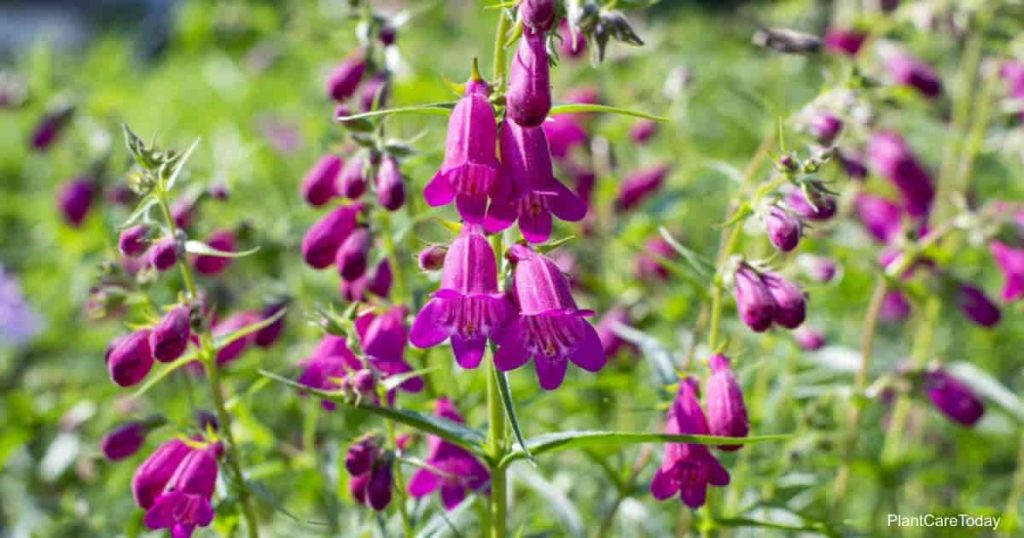
Beardtongue, or Penstemon, is a diverse genus of perennial plants that includes many species native to North America. These plants produce tubular flowers in a range of colors, including shades of red, pink, purple, and blue. The nectar-rich flowers of beardtongue attract hummingbirds and other pollinators. Different species have different growing requirements, but most prefer full sun and well-drained soil.
22. Larkspur

Larkspur, or Delphinium, is a tall perennial plant that bears spikes of colorful flowers in shades of blue, purple, pink, and white. The nectar-rich flowers are known to attract hummingbirds. Larkspur prefers full sun and fertile, well-drained soil. It’s important to note that larkspur is toxic if ingested, so it’s not recommended for gardens with pets or young children.
23. Red Hot Poker

Red Hot Poker, scientifically known as Kniphofia, is a striking perennial plant with tall spikes of tubular flowers that resemble fiery torches. The bright red, orange, and yellow flowers are irresistible to hummingbirds. Red Hot Poker prefers full sun and well-drained soil. It’s a drought-tolerant plant that can add a unique touch to your garden.
24. Lupine
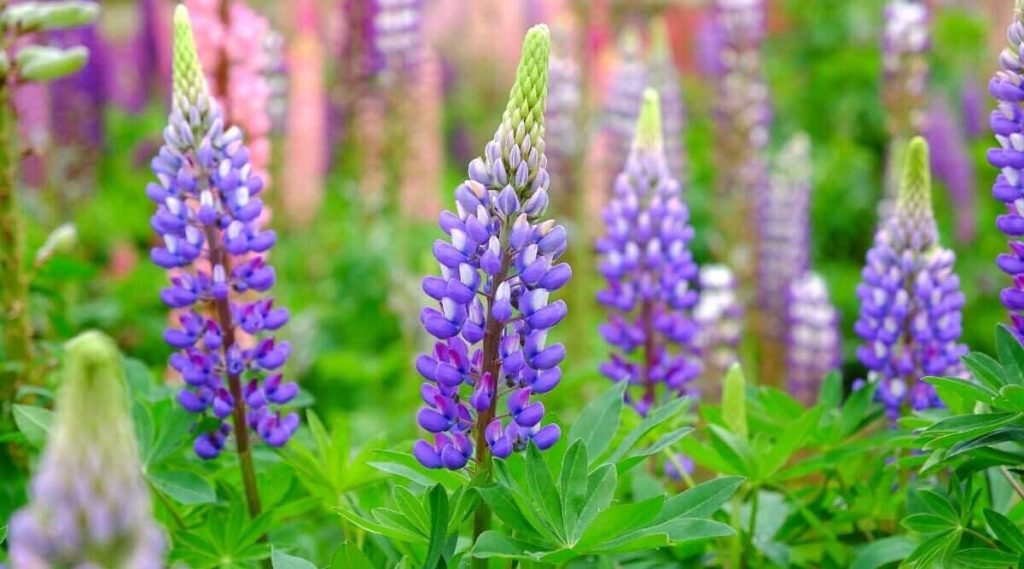
Lupine is a genus of flowering plants that includes both annual and perennial varieties. These plants produce showy flower spikes in a range of colors, such as purple, blue, pink, white, and yellow. Lupines are known to attract hummingbirds and other pollinators. They prefer full sun to partial shade and well-drained soil.
25. Scarlet Gilia
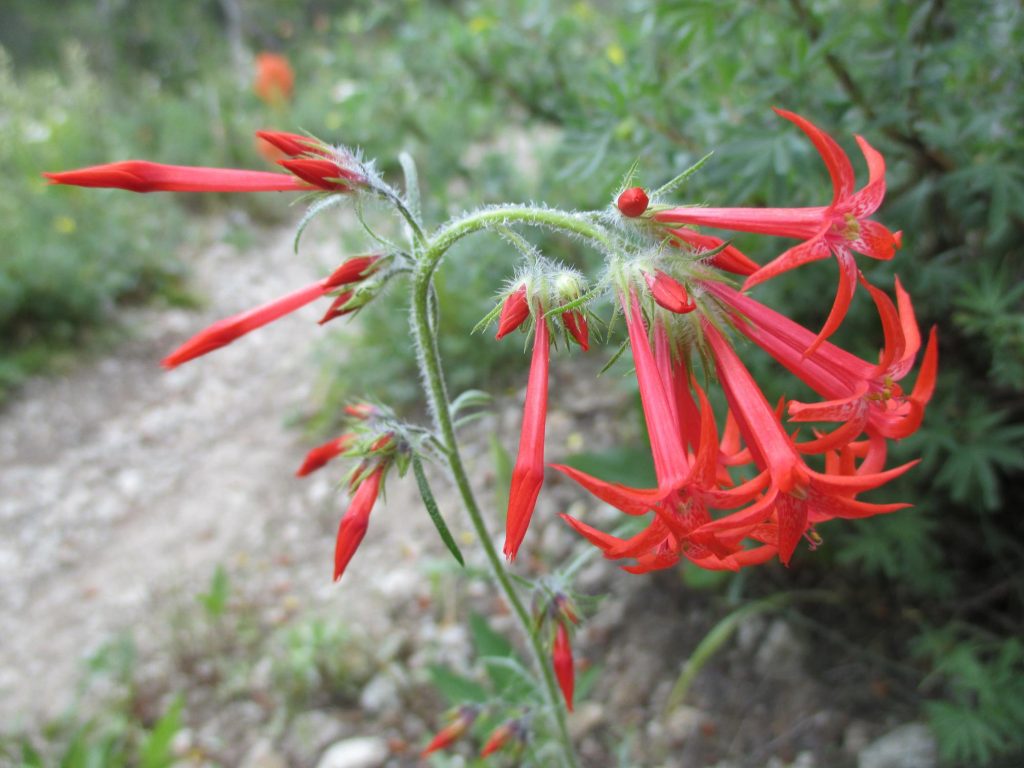
Scarlet Gilia, scientifically known as Ipomopsis aggregata, is a native wildflower that bears clusters of bright red, trumpet-shaped flowers. These flowers are highly attractive to hummingbirds and provide a burst of color in the garden. Scarlet Gilia thrives in dry, sandy soil and prefers full sun.
26. Coral Bells
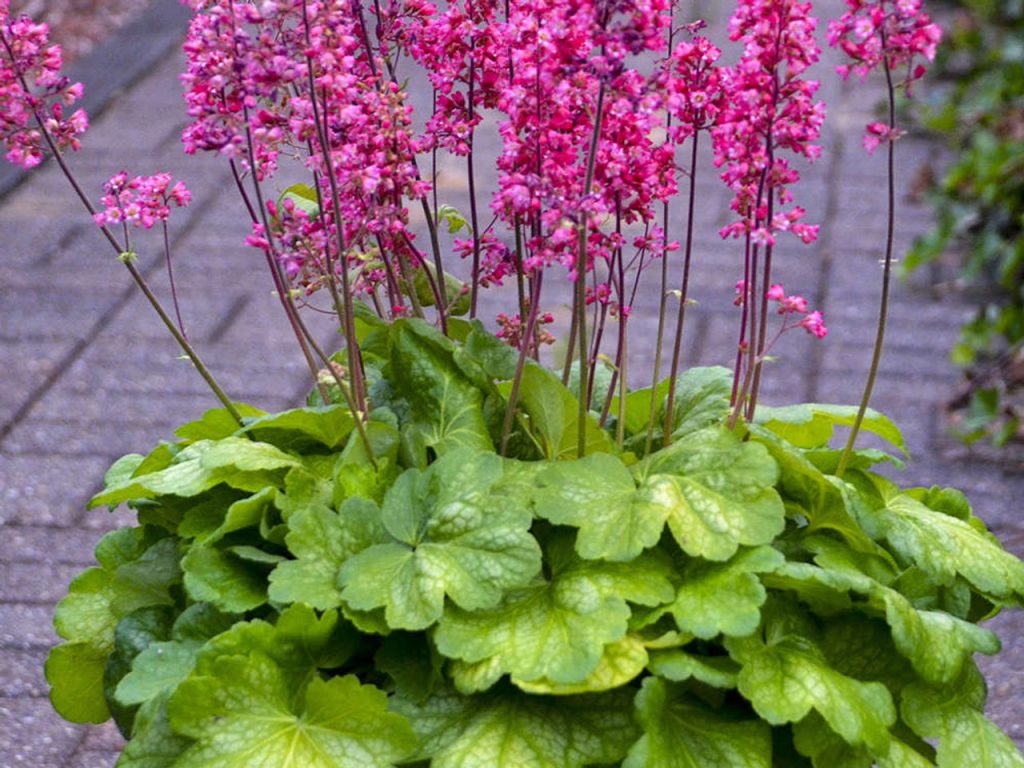
Coral Bells, or Heuchera, are perennial plants appreciated for their attractive foliage and delicate, bell-shaped flowers. The flowers come in various colors, including shades of red, pink, and white, and attract hummingbirds. Coral Bells prefer partial shade and well-drained soil. They can be planted in borders, rock gardens, or containers.
27. Cardinal Climber

Cardinal Climber, scientifically known as Ipomoea sloteri, is a fast-growing annual vine with heart-shaped leaves and vibrant red, trumpet-shaped flowers. As the name suggests, it is a favorite of hummingbirds. Cardinal Climber thrives in full sun and well-drained soil. It can be trained to climb trellises, fences, or other structures.
28. Bee Balm
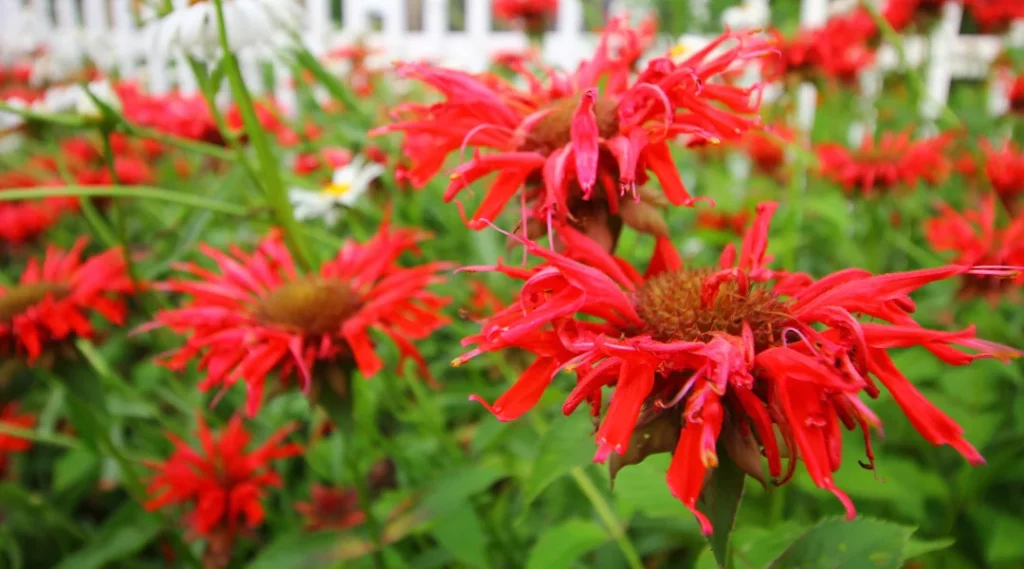
Bee Balm, or Monarda, is a perennial herbaceous plant that produces clusters of tubular flowers in shades of red, pink, purple, and white. The fragrant flowers attract hummingbirds and a variety of pollinators. Bee Balm prefers full sun to partial shade and moist, well-drained soil.
29. Columbine
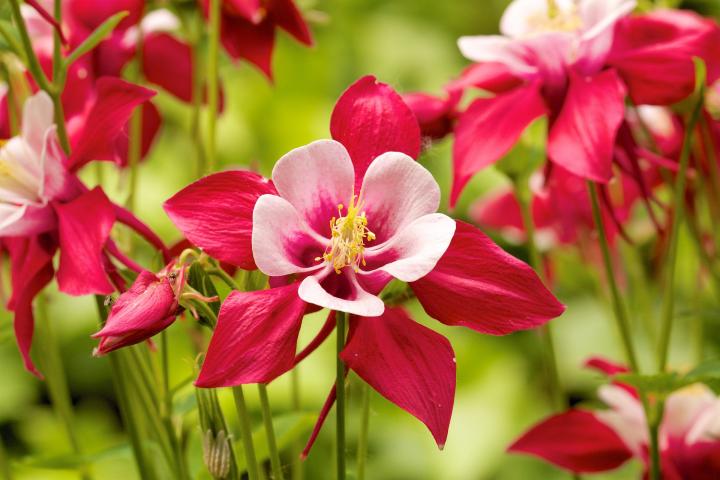
Columbine, or Aquilegia, is a perennial plant with unique, spurred flowers that come in various colors, including shades of red, pink, yellow, purple, and white. The nectar-rich flowers attract hummingbirds. Columbine prefers partial shade and well-drained soil. It’s a versatile plant that adds charm to cottage gardens and woodland settings.
30. Honeysuckle

Honeysuckle is a genus of climbing vines known for their fragrant, tubular flowers that are often red, orange, or yellow. These flowers are highly attractive to hummingbirds. Honeysuckle vines prefer full sun to partial shade and well-drained soil. They can be trained to climb trellises, fences, or arbors, adding beauty and fragrance to your garden.
These additional plant options provide a wide range of colors and characteristics to attract hummingbirds in Wyoming. Remember to consider factors such as hardiness zone, soil conditions, and sunlight requirements when selecting plants for your garden.
